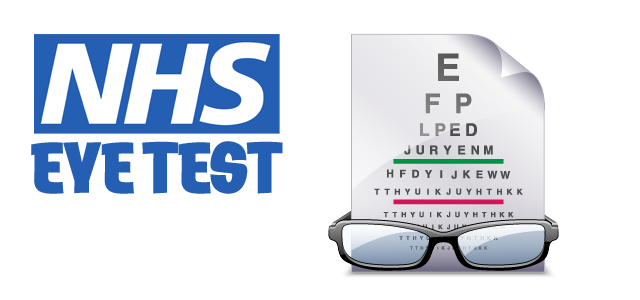![]()
Jack Brown Eyecare, Edinburgh Opticians.
Email: info@jbeyecare.com
Jack Brown Eyecare Branches
30 Elder Street, Edinburgh EH1 3DX
Tel: 0131 557 3531
Open in Google Maps
Westside Plaza, Edinburgh EH14 2SW
Tel: 0131 442 2333
Open in Google Maps

Being born without eyes, the condition termed anophthalmia, has recently hit the headlines again. Pam Henderson, Peripatetic teacher in Lincolnshire, gives some background to the condition and describes her own involvement with parents and the media over the years. Seven years ago, I began to be concerned about the numbers of visually impaired children in the rural areas of Lincolnshire. I collated information and statistics and began to try to construct common factors between the children affected.
In 1993, Mike Paduano, a reporter from the Observer newspaper in London heard of my concerns and the support group which I had formed in this region called VIPS (Visually Impaired and Parents Support). This is a group for all visually impaired children and their families - amongst whom were those with microphthalmia and anophthalmia. I was faxed an extract of a report about a piece of research carried out in the USA indicating that rats, heavily exposed to a particular fungicide, produced offspring which were either anophthalmic, microphthalmic or who had other eye abnormalities.
After reading this, I questioned whether children in Lincolnshire could have been similarly affected due to exposure to a chemical. The same fungicide as that mentioned in the extract was, and still could be, used by farmers on agricultural or fruit crops. Indeed one of the parents, a farmer, had well recorded evidence of when he himself had used this particular fungicide. At meetings, finding conception dates from a room full of parents has caused considerable humour! I had very soon discovered that birth dates were of little relevance as not all the children had been born full term.
After the release of the Observer article in 1993 there was mayhem. Demand for more information took me into ophthalmology books galore. However, of the books I used, only one book made mention of anophthalmia and that was to link it with Rubella (German measles in pregnant women) (Martin-Doyle and Kemp 1975). Some geneticists have linked rare syndromes they are researching with microphthalmia. And, in the seminar extract from the 1994 Partially Sighted Society conference, Professor Fielder (1994) is quoted as saying that, 'the major causes of visual impairment in children are associated either with birth or during foetal life'. He further states that, 'major causes of visual impairment are now genetic disorders, neurological disorders and malformation.'
As parents from all over the country began telephoning me for more information, and indeed from different countries, I felt that not enough was known about the actual causes of anophthalmia and microphthalmia (the latter condition was mentioned in clinical ophthalmology books - but not the former). I could find little medical research that had been carried out with regard to any possible connection with chemical exposure during foetal development. Lobbying of the Government therefore began. On behalf of the hundreds of families who had contacted me I wanted an answer! I made many trips to London to meet with other parents of children similarly affected. A meeting with Lord Ashley of Stoke and eventually at Whitehall with Baroness Cumberlidge resulted in a question being tabled in the House of Lords by Lord Ashley. The response by Baroness Cumberlidge, who spoke on behalf of the Government, was that a Research Project, funded by the Government, would be carried out to investigate the causes of anophthalmia and microphthalmia. (Although the research has begun, no report of its findings have been made available to my knowledge).
My first aim had been achieved, now perhaps we will find out if this chemical had interrupted foetal development and caused all these children to be visually impaired. My second aim, to bring together all parents of children that had either anophthalmia or microphthalmia went equally well. With the backing again of the 'Observer' newspaper and Mike Paduano, I arranged a national meeting of all parents and children at the School of Agriculture, DeMontfort University, Riseholme near Lincoln.
Many parents met others for the first time. It was very emotionally charged, as had been other meetings within Lincolnshire, as parents repeated the same, or similar stories. One set of parents had been told that their little boy with monocular microphthalmia was a 'freak of nature'. Others, that there was no genetic reason for their child's bilateral anophthalmia, others still, 'it must have been something you did during pregnancy'. The overall picture was of parents desperately wanting to know, 'what caused my child's visual impairment?' I firmly believe that parents, in the initial period after diagnosis, do not receive sufficient information, help and support. For those parents who are known to me, I have a set procedure which I devised to guide parents into acceptance and bonding with their new baby - my prime aim being to show parents their child first, and then deal with the visual impairment, rather than focusing on the visual impairment which after all is only one part of the whole child.
The meeting was a huge success and led on to the forming of the National Group known as MACS (Micro and Anophthalmic Children's Society). This is run by parents of anophthalmic and microphthalmic children nationally.
VIPS, my own group, continues to meet, encompassing all visually impaired children (including MACS children) in the region. The fight for answers goes on - questions are still being asked, children and parents still contact me and I wait, along with hundreds of others for answers to the question - 'what caused my child's visual impairment?'
- Pam Henderson Peripatetic Teacher, Lincolnshire
Acknowledgements
Fielder, AR (Prof), 1994, Paediatric Ophthalmology - Extract from Partially Sighted Society 1994 Conference Seminar
Martin-Doyle and Kemp (1975) A Synopsis of Ophthalmology, Ch XIX, page 204 - Ocular Signs of General Disease, Pub John Wright and Sons Ltd, Bristol
Phillips, CI (1984) Basic Clinical Ophthalmology, Ch 1, page 1 - Embryology, Anatomy and Physiology, Churchill Livingstone - Medical Division of Longman Group UK Ltd
Anophthalmia
Anophthalmia is the term used when there is a total lack of an eye, indicating some outside interruption during intrauterine foetal development very early after conception. Anophthalmia may be monocular (affecting one eye), or bilateral (both eyes). Obviously there is no sight and therefore no treatment can be offered. Cosmetically, however, sockets can be measured, moulds taken and artificial eyes (matched with parental or sibling eye colouring) fitted.
Some children with anophthalmia also have malformed sockets or partially sealed facial bones which further hinder fitment of artificial eyes. Many consultant ophthalmologists fit sponges into the empty sockets of small babies, whilst others prefer to wait until the child is old enough to tolerate an artificial eye. There appear to be differing views about this amongst consultant ophthalmologists and it depends on which consultant parents see as to which method is thought to be best.
Sockets can require cleaning and some parents have to be helped and taught to overcome their own fears about 'empty' eye sockets. These fears are often exacerbated by media representation of eyes and eye sockets.
Microphthalmia
Microphthalmia is commonly called 'small eye syndrome'. Most of the children known to me are affected in one eye. The eye is obviously reduced in size, and again, according to my statistics, is blind with no vision at all. However, in Lincolnshire there are children who have bilateral microphthalmia with resultant extreme reduced vision. These children are all registered blind although all also have some residual vision.
One child had such a small eye that removal took place and an artificial eye was fitted. Other children have shields made which cap over the microphthalmic eye - these are fitted for purely cosmetic reasons. I have found that children who have one microphthalmic eye vary in their reactions to it - some hate their 'small eye', others seem to be able to accept it, only questioning why or how. Most children known to me become more aware of their visual impairment once they begin school as other children soon point out the difference. I believe it is important to allow children to talk through their questions and I am always available to help them.
Fact File
The US chemical company DuPont produce benomyl (brand name Benlate), the fungicide that has been linked to cases of micro and anophthalmia
- The chemical was used on fruit and vegetable crops and is still being used.
- Animal experiments have suggested a possible link between benomyl and anophthalmia (see British Medical Journal, August 1993).
- Yet to be conclusively determined is whether the chemical interferes with the development of the eyes in children whose mothers are exposed to the chemical during pregnancy. Dr Vyvyan Howard, Senior Lecturer of Department of Foetal and Infant Toxico-pathology at Liverpool University contends that it is proven on the 'balance of probabilities'.
- Clusters of cases in Britain are known to have occurred in rural areas of Lincolnshire, South Wales, Fife and near Guildford.
- On average, 15 cases of anophthalmia are reported each year in Britain equivalent to one in 10,000 births.
- A number of parents have launched the 'Eyeless babies research appeal' to raise £30,000 to fund research to prove conclusively whether the chemical could cause anophthalmia.
- The chemical has also been linked to infertility.
Current developments
Research into possible links between anophthalmia and benomyl by public bodies in Britain, such as the Fife Health Board has so far been inconclusive. However, micro and anophthalmia have recently been in the national news again. A report in the Mail on Sunday described the case of the Castillo family in Florida who have a son with anophthalmia. The mother claims she was exposed to the chemical Benlate during early pregnancy. Jim Ferraro, a lawyer from Miami, took on their case against DuPont and the family were awarded £2.5 million, setting a new precedent. DuPont are now preparing to appeal, claiming the jury's decision was based on sympathy for the child.
Soon to come to Britain, Jim has agreed to take on cases on a 'no win, no fee' basis and it is hoped that cases will be lodged by the end of this year. In addition to the cases of anophthalmia in Lincolnshire, between 1981 and 1993, 27 children with micro or anophthalmia were born in Fife, Scotland. Whilst in 5 of the children, the condition was found to be genetic, 22 cases are left unexplained. Benomyl type fungicides were used ten times as much in Fife compared to the rest of Scotland. Fife Health Research Agency are conducting further research.
text size >












